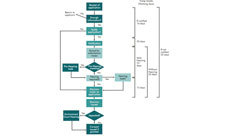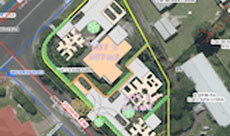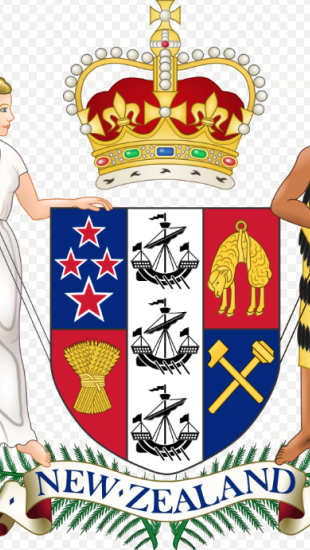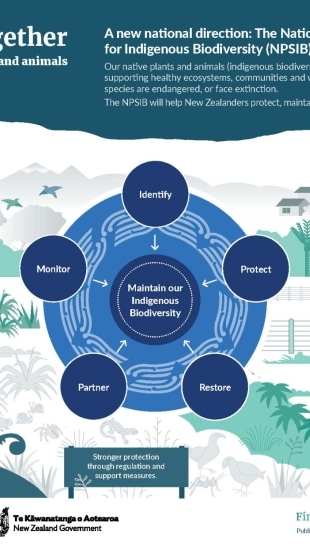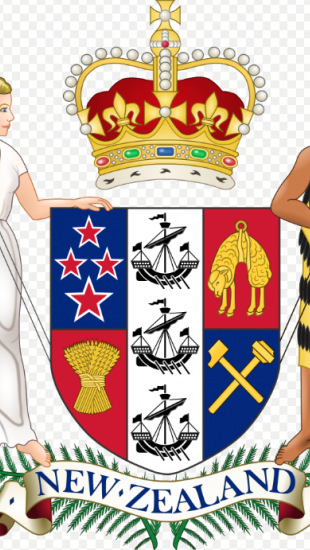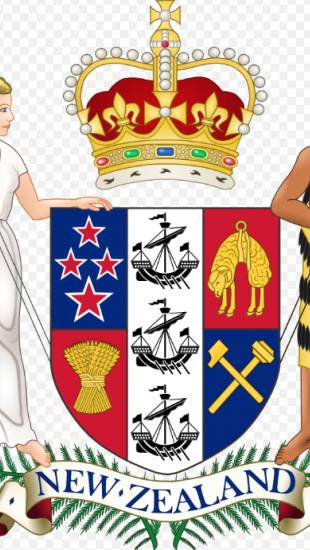National Policy Statement for Indigenous Biodiversity 2023

The Government has released the new National Policy Statement for Indigenous Biodiversity (NPS-IB) to protect and maintain indigenous biodiversity across Aotearoa New Zealand. The NPS-IB will come into force on 4 August 2023 and will direct local authorities to update their policies, plans and strategies to reflect NPS-IB requirements. Some parts, including the preliminary and implementation provisions, objectives and policies, are required to be implemented immediately, while other parts do not need to be delivered until Mid-2033.
Indigenous biodiversity
Indigenous biodiversity refers to “the living organisms that occur naturally in New Zealand, and the ecological complexes of which they are part, including all forms of indigenous flora, fauna, and fungi, and their habitats”.[1] Aotearoa’s indigenous biodiversity is under threat, decreasing by 12,869 hectares in area between 2012 and 2018 alone.[2] The NPS-IB seeks to respond to that threat, including by requiring at least no overall loss in indigenous biodiversity and by promoting and providing for the restoration of indigenous biodiversity.
There has been a lack of guidance regarding what the requirement to protect indigenous biodiversity in the Resource Management Act 1991 (RMA) looks like, meaning it has been applied inconsistently across Aotearoa New Zealand. The NPS-IB is intended to set clear and consistent criteria for identifying and managing indigenous biodiversity across different districts and regions. It applies to the terrestrial environment and specified highly mobile fauna whether or not they use areas outside the terrestrial environment. The coastal marine area and freshwater are provided for separately in the New Zealand Coastal Policy Statement 2010 and the National Policy Statement for Freshwater Management. The NPS-IB specifies that where there is a conflict between the NPS-IB, and the NPS-FM or NZCPS, the NPS-FM and NZCPS prevail.
Implications
The NPS-IB sets requirements for district and regional councils to amend their policies, plans and strategies. For some districts and regions, the changes will be minimal, in that councils will already be administering their plans consistently with the NPS-IB. The key changes are:
- District Councils will be required to undertake a district-wide assessment of Significant Natural Areas (SNAs) and notify a plan or plan change to include SNAs in their plans including by mapping each SNA and describing its attributes by 4 August 2028. Private land is able to be included as forming all or part of an SNA.
- Prior to plans being amended to give effect to the NPS-IB, the NPS-IB will still be relevant to consents for activities that may have adverse effects on indigenous biodiversity.
- Established activities, being activities that are in or affect a SNA and are not a new subdivision, use or development, will be allowed to continue provided they:
- are no greater in intensity, scale, or character over time than at 4 August 2023; and
- do not result in the loss of extent, or degradation of ecological integrity, of an SNA.
- Except in the case of special circumstances, including specified infrastructure that provides significant national or regional public benefit, the following adverse effects of any new use, subdivision or development must be avoided:
- loss of ecosystem representation and extent:
- disruption to sequences, mosaics, or ecosystem function:
- fragmentation of SNAs or the loss of buffers or connections within an SNA:
- a reduction in the function of the SNA as a buffer or connection to other important habitats or ecosystems:
- a reduction in the population size or occupancy of Threatened or At Risk (declining) species that use an SNA for any part of their life cycle.
- Significant adverse effects of new subdivision, use, or development on indigenous biodiversity outside of SNAs are also required to be managed by applying the effects management hierarchy included in the NPS-IB. This involves managing the adverse effects of an activity on indigenous biodiversity so that:
- adverse effects are avoided where practicable; then
- where adverse effects cannot be avoided, they are minimised where practicable; then
- where adverse effects cannot be minimised, they are remedied where practicable; then
- where more than minor residual adverse effects cannot be avoided, minimised, or remedied, biodiversity offsetting is provided where possible; then
- where biodiversity offsetting of more than minor residual adverse effects is not possible, biodiversity compensation is provided; then
- if biodiversity compensation is not appropriate, the activity itself is avoided.
New resource management system
The NPS-IB has been developed under RMA, which the Government plans to repeal and replace with the Natural and Built Environments Bill (NBA). The NPS-IB will be transitioned into the proposed National Planning Framework developed under the NBA.
[1] National Policy Statement for Indigenous Biodiversity, clause 1.6.
[2] National Policy Statement for Indigenous Biodiversity General Summary, page 2.

